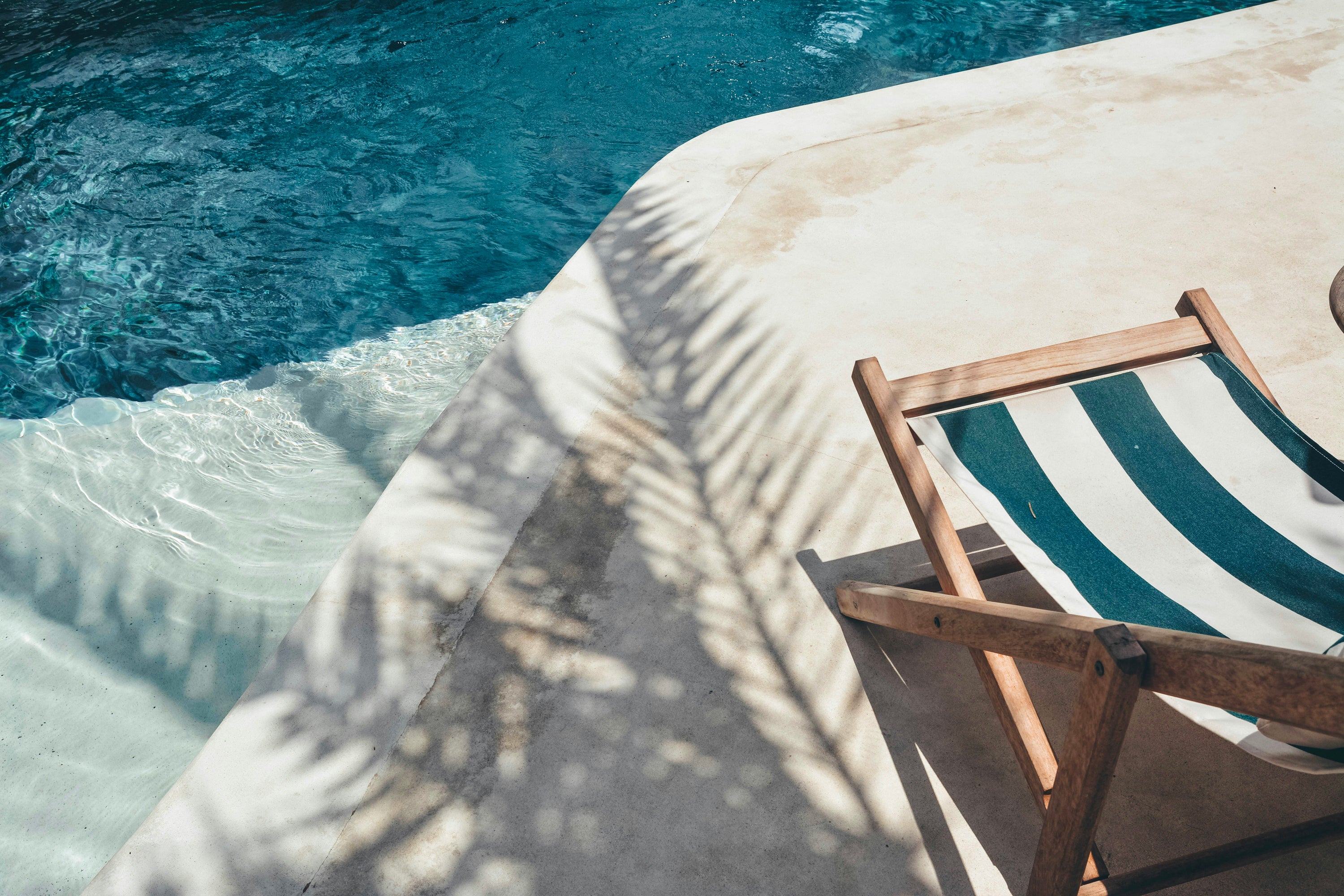
Sun protection
Summer is finally here! We’re taking this opportunity to discuss the sensitive topic of sunscreens. This subject is particularly important because it’s not just about beauty, but health! It’s worth taking a serious look at it, don’t you think?
Here, we provide some basic concepts, our beliefs supported by top-level scientists and cosmetology experts, and recommendations for a safe summer.

The Benefits of the Sun
The benefits are numerous, affecting the skin, body, and even the mind:
- Vitamin D synthesis: The sun activates the synthesis of vitamin D, which helps fix calcium, thereby strengthening bones and boosting the immune system.
- Improved sleep: It helps improve sleep and combat insomnia by resynchronizing our biological clock and increasing melatonin levels.
- Skin improvements: It reduces skin imperfections, such as acne.
- Mood enhancement: Sun exposure boosts vitamin D, which stimulates endorphins, the hormones of well-being and happiness. Plus, the sun often means holidays and a sense of lightness.
- Healthy appearance: It gives a healthy-looking complexion.
UV filters against sun damages
- UVB and UVA rays:
- Ultraviolet B rays stop at the epidermis and are responsible for sunburn.
- Ultraviolet A rays, on the other hand, reach deep into the dermis, causing premature aging of the skin.
We must therefore protect ourselves from both types of ultraviolet rays, especially as they also cause damage to cellular DNA, leading to the risk of skin cancer, which can be triggered decades after a sunburn.
- Two families of filters exist:
- Organic filters: These are synthetic molecules, invisible upon application (no white traces), and they absorb UV rays.
- Mineral filters: Titanium oxide and zinc, which do not penetrate the skin but are visible (leave white traces) and reflect UV rays.
- Choosing sun protection:
- SPF (“Sun Protection Factor”): This measures protection against UVB rays. For example, SPF 50 theoretically means you can stay in the sun 50 times longer than without protection before getting sunburned. However, sunburn typically occurs after about 12 minutes of exposure, making it unrealistic to stay 50 times 12 minutes (600 minutes or 10 hours) in practice. Especially as, in “real life”, we use 3 or 4 times less product than the quantity used in the laboratory to calculate SPF (2mg per cm2), and, what's more, not necessarily in equal quantities on all parts of the body! It's also important to know that the degree of protection also varies according to texture: a mist protects much less than a cream; and according to phototype: fair skin is much more vulnerable than dark skin.
- Cumulative Sun Exposure: Last but not least, each person's sun capital diminishes with exposure and age, and so does the skin's capacity for self-defense.
- Protection Claims: There’s debate over the accuracy of the protection claims on sunscreen products. Dr. Céline Couteau, a pharmacy professor and sun protection expert, estimates that "50% of protection indices are overestimated," especially in mineral products.
- UVA Protection: SPF does not measure UVA protection. For this, a PA rating is used (“Protection Grade of UVA” ). European regulations, in particular, require that UVB protection must be three times higher than UVA protection. For instance, an SPF 30 product will have a UVA protection factor of 10.
How to Properly Protect Your Skin from the Sun
Absolute Recommendation: Never expose yourself to the sun without sunscreen. It won’t prevent you from getting a tan, but it will limit skin aging and cancer risks. This is no longer about beauty; it’s about preventive health!
Sunscreen products can combine mineral and organic filters, especially in high-protection formulas or depending on the chosen texture.
At TiL, we strongly advise using broad-spectrum protection (UVA + UVB), which should be clearly indicated on the packaging.
Key Guidelines:
- Reapply frequently: Apply your sunscreen at least every 2 hours, after every swim, and in a thick, even layer.
- Choose creams: Prefer cream textures over sprays or light lotions. While sprays and lotions are pleasant to use, they provide much less protection because the applied layer is very thin.
- Avoid peak hours: Do not expose yourself to the sun between 12 PM and 4 PM. Wear a wide-brimmed hat, sunglasses, and make sure to cover small children.
- Stay in the shade is also a viable option, but remember that indirect radiation is dangerous, as sand and water reflect UV rays….

Year-Round Sun Protection?
Should we use SPF products year-round?
At TiL, out of season, we don't recommend the daily use of sunscreens in day creams and/or foundations/tinted creams, even if they're in vogue. Why not? Would it ever occur to you to go to the office in a bathing suit? With a hat and sunglasses? No ?
Then why do you want to put sunscreen on your skin every day of the year?
- Toxicological and environmental profile: Sunscreens are essential in the sun but have profiles unsuitable for daily use.
- What about the suspicion of endocrine disruptors? According to Dr Céline Couteau, “this trend from the United States is particularly deleterious, as the filters contained in these everyday products (moisturizers, foundations, BB creams) are suspected of being endocrine disruptors and/or sensitizing agents. No one can predict today what the consequences of daily application of such products throughout the year might be” (source revuepharma.fr)
- Environmental impact: some filters are harmful to the environment. And while some products claim to have minimal impact on coral reefs and the marine ecosystem, there is no recognized label and therefore no control....
- Effective application: suncare products with filters must be applied in a thick layer every 2 hours to be effective... This is not really the case for an everyday cream or foundation!
- Formulation paradox: in terms of formulation, our Scientific Director, Lionel de Benetti, explains that it's paradoxical to formulate a skincare cream with SPF: “the skincare product must penetrate the skin as far as possible to carry the active ingredients to the area where they are needed. A sun cream, on the other hand, doesn't need to penetrate; the filters need to remain on the surface to protect the skin like a shield...”
- Vitamin D synthesis: using sunscreen year-round blocks beneficial vitamin D synthesis.
So how can a daily skincare product with sun filters be effective and useful 12 months out of 12, including winter at the office, when it's also applied in the morning in a very thin layer? And even in the summer, a product with sun filters applied in the morning at 7 or 8 am is of no use for your lunch on the terrace, as most of the filters have been deactivated in the meantime...
A bit of common sense: use true sunscreens when exposed to the sun, but not year-round in your skincare products.



